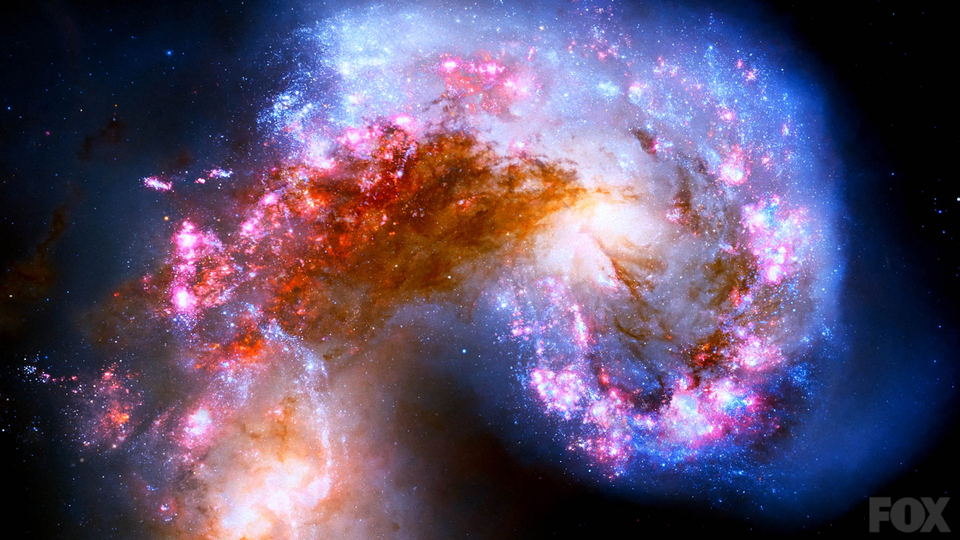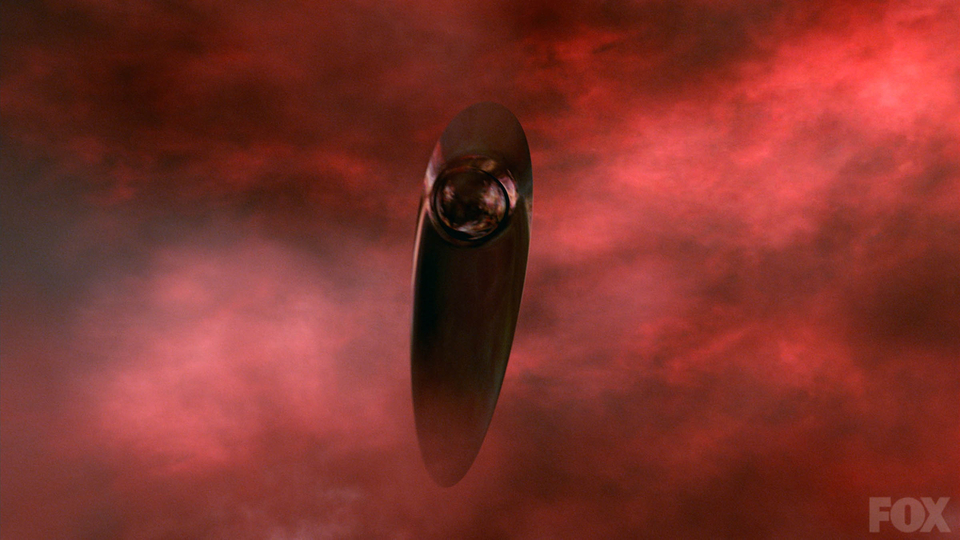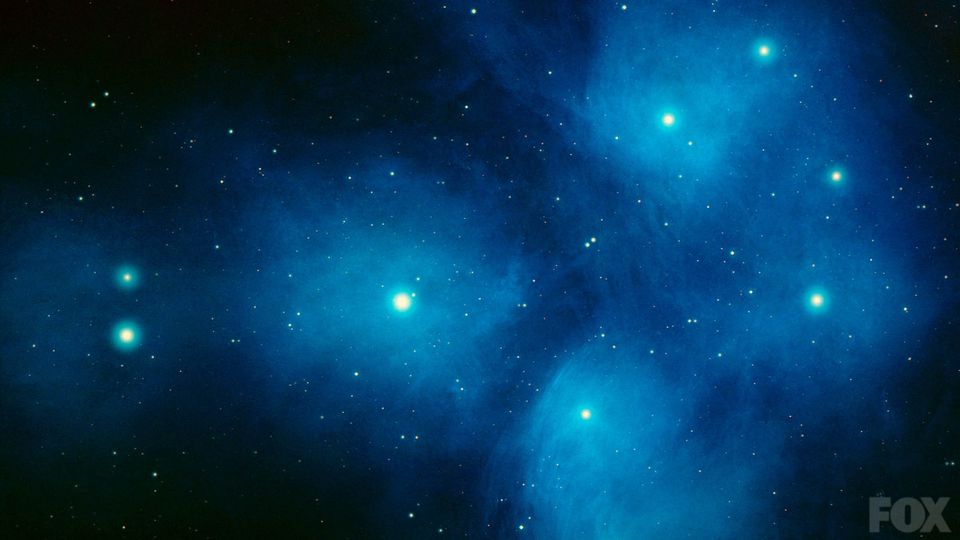 |
| Hubble's view of the Antennae Galaxies made it on TV! (cosmosontv.com) |
It's even weirder when you think about travelling at close to the speed of light. Einstein's theory of special relativity basically boils down to "Everyone measures the same speed of light". Then, for emphasis, it adds: "No, I mean it. No matter what absolute nonsense has to be true for that to happen, that's what happens." Note here that "what absolute nonsense has to occur" includes things like time passing more slowly the faster you travel relative to someone else, light shifting wavelengths so that you could see radio waves or gamma rays with your eyes, objects behaving as though they have more mass at high speeds, and on and on. Then, once you add in the principle that gravity is equivalent to acceleration, you get massive objects bending light travelling past them, clocks running slower the closer you are to a massive object, and those ridiculous objects that are so massive not even light can escape their gravity: black holes.
Oh, and maybe there is an infinite hierarchy of other universes in each black hole.
Let's get started!
Nitpicks
 |
| Almost! (cosmosontv.com) |
So this week's nitpicks really live up to the meaning of the word. First up is the way the black hole was animated, as a perfectly spherical black spot surrounded by a glowing but otherwise non-surprising whirlpool. While this makes it pretty clear where to look, from my understanding of how these objects behave, there should be a lot of distortion due to the incredible gravity of the black hole bending the light around it, and since the matter in the disk is spinning at close to the speed of light, you should be able to see a noticeable difference in appearance between the left and right sides of the hole (one side is coming towards us and would be blueshifted, and the other is going away and would be reshifted). Here's a really good animation from NASA that shows some of these features. Be sure to appreciate the crazy ring around the event horizon that we can see because of light that gets wrapped around the black hole!
For my next pick, let's take a look at the very first stars:
This is supposed to be the early universe filled with the very first stars. Right before this scene, NdGT shows us a red speck from a famous Hubble image which represents one of the oldest galaxies ever observed. What's weird is that, while the first stars were indeed spread out much more evenly in the early universe, before large galaxies had formed, they were most likely all very much larger, and therefore bluer, than the average star of today. I would expect, then, a blue glow, not this red haze, to represent the early universe. (Read more about the first stars in this article).
 |
| I'm confused! Why is it so red? (cosmosontv.com) |
Nods
 |
| The Pleiades Cluster is an easy target for binoculars or a small telescope. (cosmosontv.com) |
My girlfriend gifted me a great pair of binoculars recently and I've been having fun looking around the sky. After Jupiter and its tiny moons, the Pleiades is probably my favorite target so far. It's a cluster of bright, young stars just 400 lightyears away. They look beautiful under a little magnification, and they're interesting because they are sibling stars, all born together from a cloud like the Orion Nebula. If you've never noticed them before, take a look at Orion, then look above and in front of the bow. Any half decent pair of binoculars will bring out smaller stars and details you couldn't see with the naked eye.
News
I think I'll use this space to talk about the crazy warp-through-the-black-hole-into-other-universes segment of the show, not because I hadn't heard of it, but because it actually ties in to the recent discovery of gravitational waves from the first moments after the Big Bang. If you live under a pop-culture rock that shields you from science news like this, check out any old article for an idea of what's going on. If the discovery is confirmed independently by another team, it will mean hard evidence for inflation, a process by which the universe expands enormously in a tiny fraction of a second. I don't want to put my foot in my mouth trying to explain something on the edge of theoretical physics, but this kind of discovery is right in line with the best models for the formation of the Universe, including the idea of a Multiverse, seething with universes of every possible kind popping into existence. Perhaps this occurs by forming black holes as the episode speculated, or perhaps new universes pop out of nothing by spontaneous fluctuations of quantum weirdness. Whatever the answer ends up being, for the moment the more we learn about the Universe the more we are struck by the fact that reality is far more imaginative than we could ever be on our own.
Like William Herschel's ghost story for his son, the true history of the Universe as revealed by Science will almost surely outshine a hundred fold even the most powerful and frightening of our guesses in the dark. That's nothing to be ashamed of, for how could anyone possibly have been expected to imagine a multiverse when the Earth was flat and the stars were holes in the firmament? As we've heard before, the only shame is in pretending you have all the answers. The only loss is closing your mind to the fantasy of the real world.
No comments:
Post a Comment